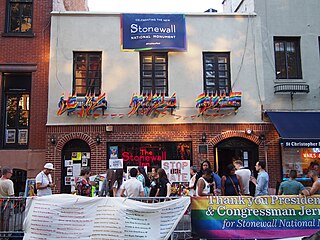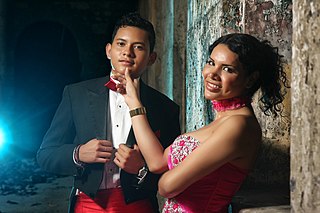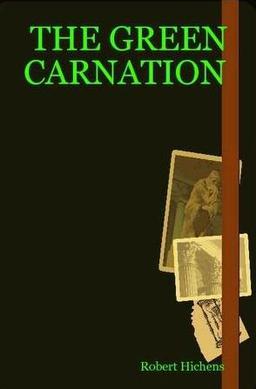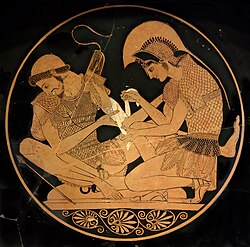
Queer is an umbrella term for people who are not heterosexual or are not cisgender. Originally meaning 'strange' or 'peculiar', queer came to be used pejoratively against LGBT people in the late 19th century. From the late 1980s, queer activists began to reclaim the word as a neutral or positive self-description.
The word cisgender describes a person whose gender identity corresponds to their sex assigned at birth, i.e., someone who is not transgender. The prefix cis- is Latin and means on this side of. The term cisgender was coined in 1994 as an antonym to transgender, and entered into dictionaries starting in 2015 as a result of changes in social discourse about gender. The term has been and continues to be controversial and subject to critique.

The LGBTQ community is a loosely defined grouping of lesbian, gay, bisexual, transgender, and queer or questioning individuals united by a common culture and social movements. These communities generally celebrate pride, diversity, individuality, and sexuality. LGBTQ activists and sociologists see LGBTQ community-building as a counterweight to heterosexism, homophobia, biphobia, transphobia, sexualism, and conformist pressures that exist in the larger society. The term pride or sometimes gay pride expresses the LGBTQ community's identity and collective strength; pride parades provide both a prime example of the use and a demonstration of the general meaning of the term. The LGBTQ community is diverse in political affiliation. Not all people who are lesbian, gay, bisexual, or transgender consider themselves part of the LGBTQ community.
Slash fiction is a genre of fan fiction that focuses on romantic or sexual relationships between fictional characters of the same sex. While the term "slash" originally referred only to stories in which male characters are involved in an explicit sexual relationship as a primary plot element, it is now also used to refer to any fan story containing a romantic pairing between same-sex characters. Many fans distinguish slash with female characters as a separate genre, commonly referred to as femslash.
Queer theory is a field of post-structuralist critical theory that emerged in the early 1990s out of queer studies and women's studies. The term "queer theory" is broadly associated with the study and theorization of gender and sexual practices that exist outside of heterosexuality, and which challenge the notion that heterosexuality is what is normal. Following social constructivist developments in sociology, queer theorists are often critical of what they consider essentialist views of sexuality and gender. Instead, they study those concepts as social and cultural phenomena, often through an analysis of the categories, binaries, and language in which they are said to be portrayed.

Pansexuality is sexual, romantic, or emotional attraction towards people of all genders, or regardless of their sex or gender identity. Pansexual people may refer to themselves as gender-blind, asserting that gender and sex are not determining factors in their romantic or sexual attraction to others.
Femme is a term traditionally used to describe a lesbian woman who exhibits a feminine identity or gender presentation. While commonly viewed as a lesbian term, alternate meanings of the word also exist with some non-lesbian individuals using the word, notably some gay men and bisexuals. Some non-binary and transgender individuals also identify as lesbians using this term.
LGBTQ slang, LGBTQ speak, queer slang, or gay slang is a set of English slang lexicon used predominantly among LGBTQ people. It has been used in various languages since the early 20th century as a means by which members of the LGBTQ community identify themselves and speak in code with brevity and speed to others.

Non-heterosexual is a word for a sexual orientation or sexual identity that is not heterosexual. The term helps define the "concept of what is the norm and how a particular group is different from that norm". Non-heterosexual is used in feminist and gender studies fields as well as general academic literature to help differentiate between sexual identities chosen, prescribed and simply assumed, with varying understanding of implications of those sexual identities. The term is similar to queer, though less politically charged and more clinical; queer generally refers to being non-normative and non-heterosexual. Some view the term as being contentious and pejorative as it "labels people against the perceived norm of heterosexuality, thus reinforcing heteronormativity". Still, others say non-heterosexual is the only term useful to maintaining coherence in research and suggest it "highlights a shortcoming in our language around sexual identity"; for instance, its use can enable bisexual erasure.
Uranian is a historical term for homosexual men. The word was also used as an adjective in association with male homosexuality or inter-male attraction regardless of sexual orientation.

The Trials of Oscar Wilde, also known as The Man with the Green Carnation and The Green Carnation, is a 1960 British drama film based on the libel and subsequent criminal cases involving Oscar Wilde and the Marquess of Queensberry. It was written by Allen and Ken Hughes, directed by Hughes, and co-produced by Irving Allen, Albert R. Broccoli and Harold Huth. The screenplay was by Ken Hughes and Montgomery Hyde, based on an unperformed play The Stringed Lute by John Furnell. The film was made by Warwick Films and released by Eros Films.

Sexual attraction to transgender people has been the subject of scientific study and social commentary. Psychologists have researched sexual attraction toward trans women, trans men, cross dressers, non-binary people, and a combination of these. Publications in the field of transgender studies have investigated the attraction transgender individuals can feel for each other. The people who feel this attraction to transgender people name their attraction in different ways.

A pride flag is any flag that represents a segment or part of the LGBTQ community. Pride in this case refers to the notion of LGBTQ pride. The terms LGBTQ flag and queer flag are often used interchangeably.
The Order of Chaeronea was a secret society for the cultivation of a homosexual moral, ethical, cultural, and spiritual ethos. Founded by George Cecil Ives in 1897, based on his belief that homosexuals would not be accepted openly in society, the Order offered a network for underground communication.
Over the course of its history, the LGBTQ community has adopted certain symbols for self-identification to demonstrate unity, pride, shared values, and allegiance to one another. These symbols communicate ideas, concepts, and identity both within their communities and to mainstream culture. The two symbols most recognized internationally are the pink triangle and the rainbow flag.
Section 11 of the Criminal Law Amendment Act 1885, commonly known as the Labouchere Amendment, made "gross indecency" a crime in the United Kingdom. In practice, the law was used broadly to prosecute male homosexuals where actual sodomy could not be proven. The penalty of life imprisonment for sodomy was also so harsh that successful prosecutions were rare. The new law was much more enforceable. Section 11 was repealed and re-enacted by section 13 of the Sexual Offences Act 1956, which in turn was repealed by the Sexual Offences Act 1967, which partially decriminalised male homosexual behaviour.
Gay is a term that primarily refers to a homosexual person or the trait of being homosexual. The term originally meant 'carefree', 'cheerful', or 'bright and showy'.

The Green Carnation is a novel by Robert Hichens that was first published anonymously in 1894. A satire on contemporary champions of the Aesthetic Movement, it was withdrawn briefly after the scandal of the Oscar Wilde trial in the following year. Later printings followed and it has remained popular for its depiction of the witty personalities of the time.

Pederasty or paederasty is a sexual relationship between an adult man and a boy. It was a socially acknowledged practice in Ancient Greece and Rome and elsewhere in the world, such as Pre-Meiji Japan.

Graysexuality, greysexuality, gray asexuality, or gray-sexuality is a sexuality within the asexual spectrum. It is often defined as limited amounts of sexual attraction that can vary in intensity. Individuals who identify with gray asexuality are referred to as being gray-A, gray ace, and are within what is referred to as the "a-umbrella". Within the a-spectrum are terms such as demisexual, graysexual, asexual, and many other types of non-allosexual identities.











